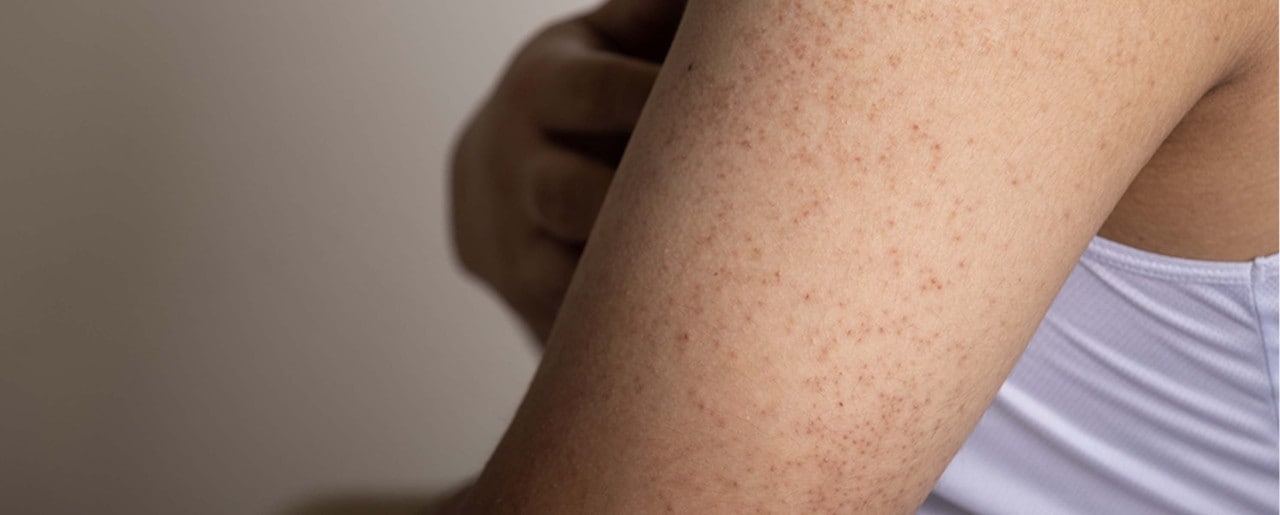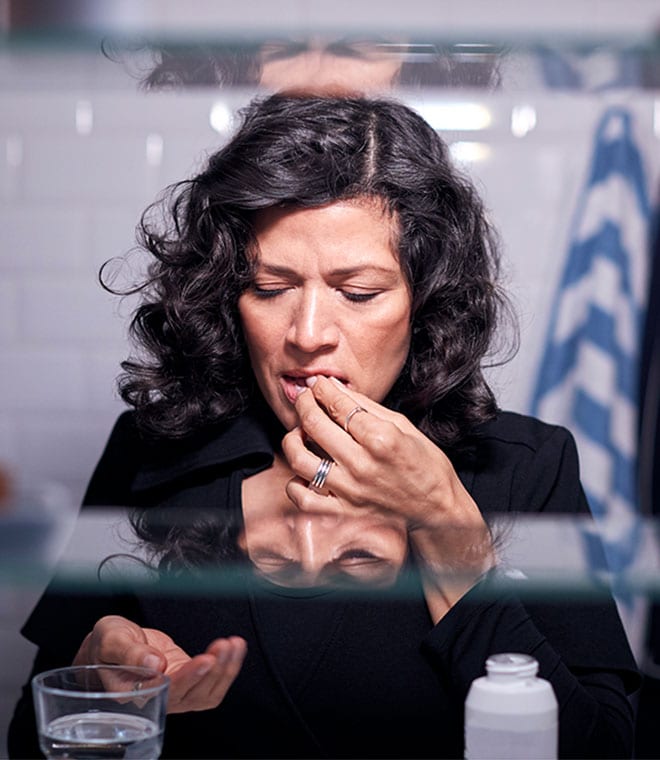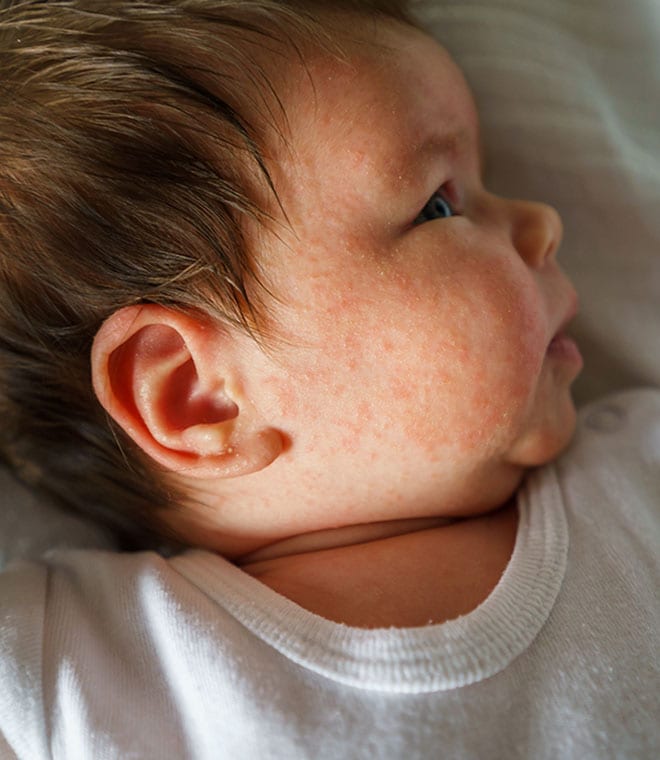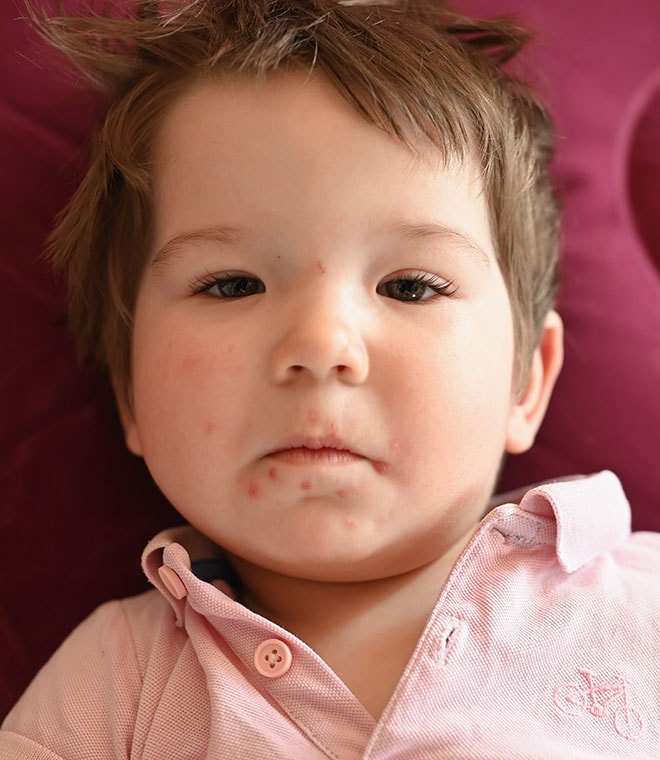Health
Keratosis pilaris treatment: What are the options?
By Anna H. Chacon, MD, Fellow of the American Academy of Dermatology Jun 17, 2025 • 7 min
Keratosis pilaris affects an estimated 50% to 80% of adolescents and 40% of adults. It’s more common in women than in men. Although keratosis pilaris doesn’t cause harm or require treatment, many people who have this condition look for solutions to improve the texture and appearance of their skin.
What is keratosis pilaris?
Typically a painless condition, keratosis pilaris occurs when dead skin cells clog hair follicles and a protein called “keratin” builds up in the pores (tiny openings) of your skin. Pores release sweat to help cool you down, as well as oils to lubricate and hydrate your skin. Pores also contain the follicles from which hairs emerge. When they become clogged with keratin, hard, rough bumps may form. In some cases, the bumps may look like goosebumps. On people with fair skin, the bumps may be white, pink, red or purplish-pink. People with dark skin usually develop brown or blackish-brown bumps. Keratosis pilaris may itch, but it doesn’t usually cause physical discomfort. However, if you scratch or dig at the bumps, scarring or skin discoloration may occur.
What causes keratosis pilaris?
Medical science has yet to uncover the exact cause of keratosis pilaris. Based on what we do know, you’re more likely to have the condition if you have:
How do you treat keratosis pilaris?
Keratosis pilaris isn’t contagious, and it’s generally harmless, so treatment may not be necessary. However, you can take steps to address this skin condition if you’re bothered by the presence of bumps.
Treatment for keratosis pilaris may include any of the following interventions:
1. Moisturizers: Dryness can worsen keratosis pilaris and lead to itching and discomfort. To soothe your skin, apply a creamy moisturizer that contains an occlusive, a type of ingredient that creates a seal over the skin to reduce how much moisture evaporates. Lanolin, glycerin and petroleum jelly are examples of occlusives commonly used in moisturizers.
Apply moisturizer after you shower or bathe, while your skin is still moist, and then reapply two or three more times during the day. Gently massage the moisturizer into the affected skin.
2. Exfoliation: The process of lifting away dead skin cells is called exfoliation. If you have keratosis pilaris, regular use of an exfoliator may help soften the skin and loosen some of the keratin trapped in your pores.
There are two types of exfoliation: mechanical (physical) and chemical.
- Mechanical exfoliation is the process of removing dead skin with something that produces friction, such as a washcloth, loofah or body scrub. When using this type of exfoliator, apply a light touch to avoid injuring your skin.
- Chemical exfoliation dissolves dead skin cells with chemical ingredients, such as salicylic acid, alpha hydroxy acid or lactic acid. Many exfoliators that contain these ingredients are available over the counter. If they fail to produce results, your healthcare provider may prescribe a stronger exfoliator.
3. Retinoids: Increasing the rate at which your body sheds skin cells may also help diminish the appearance of keratosis pilaris. Topical treatments with retinoids, which are derived from vitamin A, help with the cellular turnover process, and they may remove some of the keratin buildup that causes bumps. As with chemical exfoliators, retinoids are available in over-the-counter and prescription strengths. People with certain skin conditions, such as rosacea, may find retinoids irritating to the skin. Retinoids are also not recommended for people who are or may be pregnant, so it’s best to check with your healthcare provider before using any retinoid products.
4. Corticosteroids: In some cases, healthcare providers may recommend topical corticosteroids to reduce redness and irritation that sometimes accompanies keratosis pilaris. These medications reduce inflammation by inhibiting certain immune system responses. They’re available in over-the-counter and prescription strengths.
5. Laser and light therapy: When keratosis pilaris doesn’t respond to other treatments, healthcare providers may recommend light or laser therapy treatments, which are performed in an outpatient setting. Depending on the type of laser used, this therapy may reduce swelling, diminish redness, improve skin texture and lessen discoloration.
6. Self-care: Taking good care of your skin is an important part of any keratosis pilaris treatment plan. Follow these tips to care for your skin during treatment:
- Limit your showers to 20 minutes or less and use lukewarm water rather than hot
- Consider using a humidifier in your bedroom to hydrate your skin while you sleep
- Choose gentle skincare products and avoid those that dry out skin
- Wear loose fitting clothing to protect the affected skin from friction
- Don’t pick or scratch the bumps
- Pat your skin dry after you bathe rather than rubbing
Treatment may assist in clearing up your skin over time. You may begin to see improvements within four to six weeks with most treatment plans, and symptoms should gradually continue to improve going forward. Some people need to try more than one treatment or combine treatments to achieve desired results.
Which keratosis pilaris treatments should I try?
Healthcare providers often recommend moisturizing, exfoliation and self-care as first-line treatments for keratosis pilaris. However, which treatments are right for you will depend on a variety of factors, such as the location and severity of the bumps, your age, what activities you engage in regularly and your overall health and medical history.
Keratosis pilaris is harmless and may not need to be treated unless it itches, becomes too dry or if you have cosmetic concerns. Your healthcare provider can develop a treatment plan based on your individual needs and provide you with personalized skincare tips for addressing keratosis pilaris.
Updated by Julie McDaniel, MSN, RN, CRNI, June 2025.
Sources:
- https://www.ncbi.nlm.nih.gov/books/NBK545171/
- https://www.ncbi.nlm.nih.gov/books/NBK532940/
- https://www.aad.org/public/everyday-care/skin-care-secrets/routine/safely-exfoliate-at-home
- https://www.aad.org/public/diseases/a-z/keratosis-pilaris-treatment
- https://www.merckmanuals.com/professional/dermatologic-disorders/cornification-disorders/keratosis-pilaris
- https://familydoctor.org/condition/keratosis-pilaris/
- https://www.mayoclinic.org/diseases-conditions/keratosis-pilaris/diagnosis-treatment/drc-20351152
- https://www.ncbi.nlm.nih.gov/books/NBK546708/
- https://www.aad.org/public/everyday-care/skin-care-secrets/anti-aging/retinoid-retinol
- https://www.aad.org/public/diseases/a-z/keratosis-pilaris-self-care




